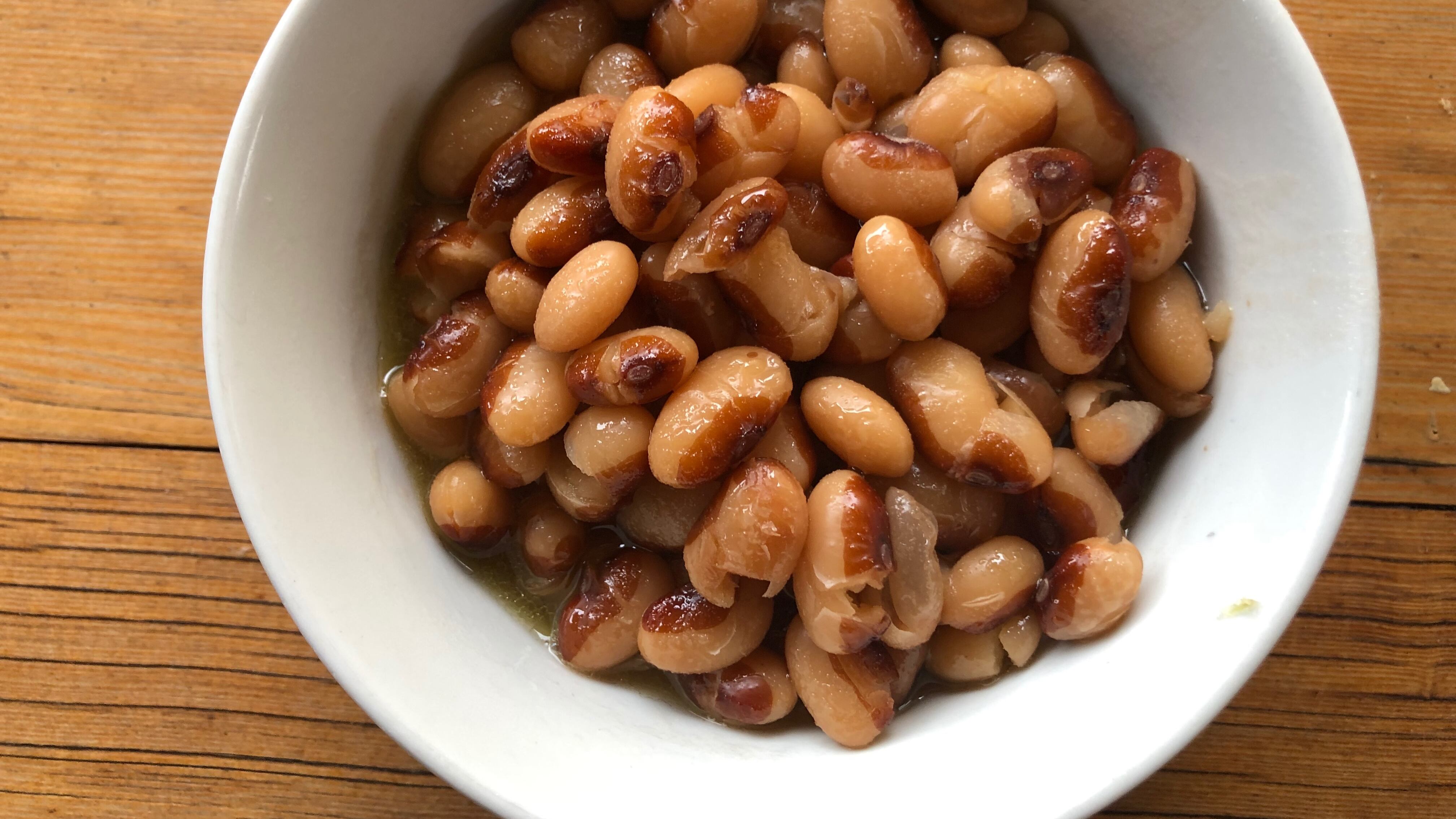Jim Dixon wrote about food for WW for more than 20 years, but these days most of his time is spent at his olive oil-focused specialty food business Wellspent Market. Jim’s always loved to eat, and he encourages his customers to cook by sending them recipes every week through his newsletter. We’re happy to have him back creating some special dishes just for WW readers.
Beans, beans, the magical fruit, the more you eat, the more you…well, you know the rest.
But eating more beans has many benefits that don’t have anything to do with farting. If you want to eat less meat for any reason, bumping up your bean consumption takes care of any protein deficiency you may be worried about. That beans and other legumes come with environmental benefits—they require much less land and water to cultivate than meat, for example—makes them perfect for smug gloating about your sustainability practices, too.
They’re also chock-full of other good stuff, from antioxidants to essential vitamins and minerals to the dietary fiber called resistant starch that feeds your gut’s good bacteria. But the reason I eat so many beans is because they’re delicious.
Most advocates of increased bean consumption insist that canned beans are fine, and if you don’t care about flavor that’s true. While you can add stuff to canned beans to make them acceptable, they’ll never be as good as home-cooked dry beans. It’s true that dry beans require more time and effort, but they’re so much better it’s well worth it.
For the best-tasting beans, look for what are often called heirloom beans. While it’s become more of a marketing term these days, when applied to beans, heirloom differentiates them from the handful of varieties that can be grown on an industrial scale. Since heirloom beans are harder to grow and harvest, they usually cost more than the commodity beans in the supermarket. But if you’re buying organic canned beans, you’re paying a lot more than you would for even the most expensive dry beans.
Beans from Anthony and Carol Boutard’s Ayers Creek Farm demonstrated to me how good beans can taste. California’s Rancho Gordo is the most well-known source for heirloom beans, but others like Seattle’s Primary Beans or Idaho-based Zursun offer equally tasty beans. Sometimes you can find locally grown beans at the farmers market, too. And because I want to eat beans all the time, we sell a few heirlooms at Wellspent Market. But even the dry beans in the bulk section, despite their commodity status, will taste better than canned.
Once you’ve got those dry beans, you’ve got to cook them. They need to be rehydrated, and some people insist on soaking beans for hours before cooking. But, as Rancho Gordo bean guru Steve Sando says, “soaking time is cooking time,” so I cook beans slowly to let them rehydrate as they cook. Most of the time I use a variation of what Italians call fagiole in fiasco, which translates to “beans in a bottle,” although I use a ceramic bean pot. Beans, water, olive oil and salt get cooked in the oven at a low temp for several hours. But the same low-and-slow approach works on the stovetop, too.
While bean broth is quite good, I prefer beans that don’t have much liquid left when they’re done cooking. For me, the perfect beans are very soft and creamy, and they can be eaten off a plate. Most of the time, I just eat them plain, and if I want to add more flavor, I’ll cook other ingredients like meat or vegetables separately. Then I add the cooked beans, and simmer everything together.
Basic Beans
1/2 pound dry beans (about 1 1/2 cups)
4 cups water
2 tablespoons extra-virgin olive oil
1 teaspoon kosher-style sea salt
Combine everything in a large pot. Bring to a boil, reduce the heat to the lowest simmer, and cook until the beans are very tender, adding a little more water if needed to keep the beans from sticking. This could be anywhere from 2 to 4 hours depending on the type and age of the beans.

